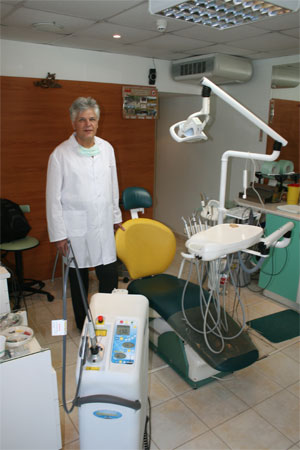When to take a child to a dentist?
The first visit at a dentist is usually made when a child is about 2 – 3 years old. Rare are the cases when a child needs a dentist at an earlier stage.
Are milk teeth important?
Yes! Children eat with them, and this is especially important for a growing organism. Ill milk teeth may "contaminate" the permanent ones, and they are not replaced. The first permanent teeth grow at the age of 6 months, and there is something particularly important – milk teeth keep place for the permanent ones. Their premature extraction results in irregularly aligned teeth.
When to treat "crooked teeth"?
It is best for the treatment of crooked teeth to start at the age of 7-8 years. That is why it is good that we bring a child to an orthodontist since the primary school, although we are not sure whether it is needed or not. Treatment is possible at a later stage, but it is done slower. There are cases described of successful orthodontic treatment at the age of 60 years.
Do ill teeth affect health?
The harmful influence of ill teeth is proven to affect the digestive, cardiovascular system, joints, kidneys.
Are "metal" /mercury/ fillings harmful?
Followers of both options are too many and there hasn't been a synonymous answer. Yet adversaries are more! The conditions for corrosion and bimetallism are more commonly met.
Can treatment be painless?
Yes, with the modern methods of anaesthetization this is absolutely possible. Unfortunately, pain is not the only unpleasant thing at a dentist, but at us you can be sure that you will have least possible negative emotions through the use of the method of the deep sedation.
Are implants successful as a method for recovery?
Yes. In the last years there has been over 96 % of tolerance. The negative is that special rules have to be observed, which guarantee the knitting and the preservation of the implant as a foreign body.
|

